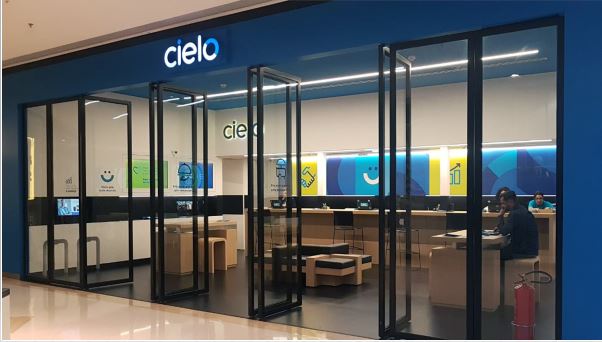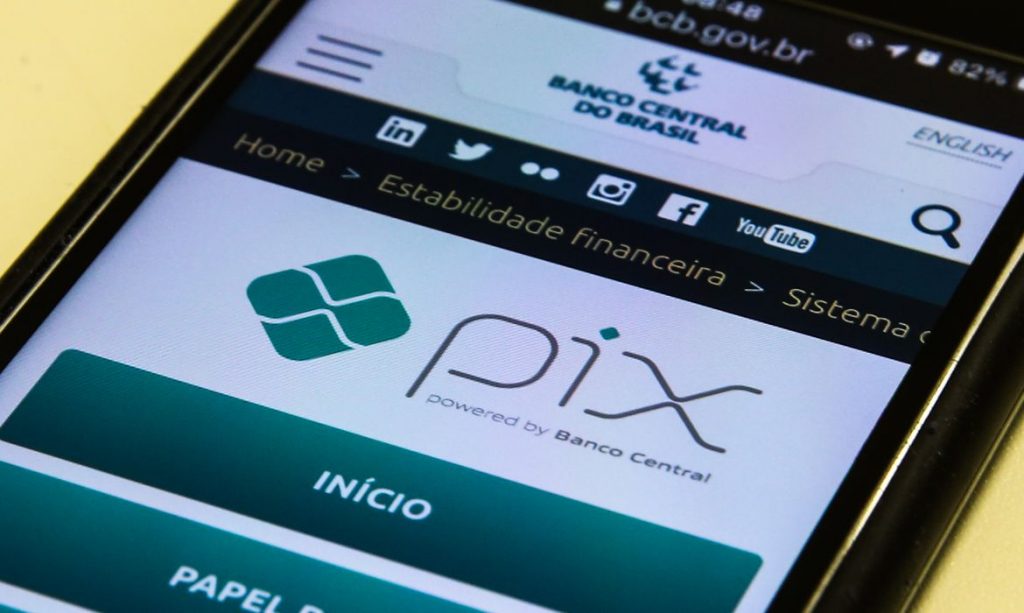Sao Paulo – starts on Friday (29) terceira fase do Open Banking In Brazil, whose latest novelty is the integration of the data-sharing ecosystem with Pix, the instant payments system launched in November last year that has already caught the taste of Brazilians.
It is important to remember that Open Banking began in February of this year, with a more bureaucratic phase 1, which consisted of sharing data from participating institutions with each other. The second phase began on August 13 and began impacting the consumer’s daily life with the ability to share registration data, such as name, CPF/CNPJ, address, credit and card information, and more.
Find out what Open Banking is and how it will affect your life in this special report from Infomoney.
Now, with the arrival of Phase 3, consumers will be able to make transactions, such as payments and transfers, using Pix as part of Open Banking. In other words, it will be possible to make a payment via Pix through channels that are not necessarily your bank’s Internet banking.
A new number regulated by the central bank enters the ecosystem: the initiators of payments. Currently, Pix is available to financial institutions that joined the infrastructure according to the rules set by BC and implemented last year, When the service started working.
From 10 am, the program starts Infomoney Promotes a live broadcast to remove all doubts about Open Banking, Pix and Phase 3 on his YouTube channel.
Who are the initiators of the payment?
Payment initiators are nothing more than BC-regulated companies that can initiate transfers and payments to customers.
In a more technical way, a payment transaction initiator (Pisp, its abbreviation in English, and ITP in Portuguese) is a type of payment institution (IP), that is, a company that provides resources for buying, selling and movement services – but without the possibility of granting loans and financing to its customers.
According to the regulations, if the company is only a payment initiator, it does not keep the financial account of the customer making the payment, and does not participate in the financial settlement.
“Pisp is a BC-regulated company that, at the request of the customer, can carry out a transaction order. In other words, you can transfer funds from one account to another at the request of the user. However, it cannot “touch” the values you transmit”, as Explains Bruno Baldocini, partner at Pinheiro Neto Advogados who specializes in banking and financial transaction law.
This Pisp number was created by BC in October 2020, already considering at this point, when Open Banking and Pix will begin to merge.
Remember to file WhatsApp, for example, has been approved as a payment initiator this year, Transfers between users are already allowed. However, the messaging app will now be able to offer its own payment service with Pix as an option – something that isn’t allowed today. On WhatsApp, in order for the transfer to take place today, the customer must have a debit card from one of the ten partner organizations of the messaging app.
With Pix integrating with Open Banking, the idea is that this list of ten will grow exponentially, opening up more customers to participate in the ecosystem. In a recent report, the Infomoney Explains how the initiator will work.
However, it is important to understand that companies that are already payment institutions, credit associations and financial institutions can also be payment initiators – as long as they seek permission from the central bank.
“At the maximum, every company that is now regulated by BC can initiate payments, if they want to. It is the most simplified regulation we have today,” explains Rogerio Melfi, representative of ABFintechs. A large bank, which is already a financial institution, can choose to also be a payment initiator, for example, and a technology company, which is not yet regulated, can also adapt to the rules of BC.
What companies enter stage 3?
According to the rules established by the Basel Convention, all institutions with demand deposits, savings accounts or prepaid payments; All institutions initiating payment transactions are required to enter the scope of open banking services in stage 3.
“In addition to participants operating in initiator mode, the initiation service of Pix may be offered by financial institutions or payment institutions authorized by BC that participate in Pix in transaction account provider mode, provided that they are authorized within the scope of Open Banking,” BC explained in a note.
Thus, WhatsApp can choose whether to offer the option via Pix in its app, for example – but if it is involved, it will need to comply with the regulations (user experience, security, among others) of Pix and the open banking system.
At the moment, there are more than 800 participating institutions organized by BC that follow the scope of the open banking rules in Brazil.
What can consumers expect from the new phase?
What is new is that the customer will not need to open the bank app, or the app of the company that has money in their account, to create Pix, as is done today.
If the customer wants and authorizes, it will be possible to make transfers and Pix payments through messaging apps (such as WhatsApp), account aggregators (such as Guiabolso and Flipper), digital wallets (such as Mercado Pago) and service applications (such as iFood and Uber) for example, or even transfer Funds from different bank accounts through a single online banking service – at the moment, the listed companies are just examples.
Over the next few days and months, companies will launch their own customer service options when it comes to payments.
Thus, the user will be able to centralize all his payment and transfer transactions in one channel – of his choice. The goal is to facilitate the day-to-day work of the consumer when he needs to make transactions and payments.
According to BC, the customer will be able to initiate a Pix transaction or other payment transaction through the payment transaction initiator platform. Among other solutions, it may be possible to initiate such a payment on an e-commerce portal, without having to use a card or open a bank app, for example.
The solutions will involve both individuals and companies. On the part of the tenants, for example, it will be possible to have a management system, which also allows to pay bills, payments from suppliers, using Pix solutions.
BC says it’s another option for the customer, who won’t stop accessing Pix because it’s already up and running today.
“The payment transaction initiation service on Pix seeks to further facilitate payments and transfers with Pix, increase competition, enhance the use of Pix in cases involving businesses, especially in e-commerce, and promote innovation,” BC says in the note.
Remember that the end customer will only deal with the final experience when it suits them. Always able to choose whether to use the payment initiator or not. This is because running Pisp via Pix, within the scope of open banking, will require data sharing by the customer – which promises to be fast and secure, as stated by BC.
Is it safe to use the launcher?
According to the Central Bank, the requirement that the institution wanting to be an initiator be a participant in Pix and Open Banking at the same time, and thus comply with the relevant rules, makes the initiator of payment safe and supervised from all angles by the BC.
In addition, it will always be necessary to confirm transactions in the environment of the bank or organization that owns the account, and, accordingly, the transaction is monitored by the BC.
Can the initiator collect fees from customers?
Yes, according to the Central Bank, it is up to the payment initiator to charge some cost to the customer to perform his service or not.
However, there is an expectation that beginners will not charge any additional fees, after all, Pix is free. If there is an additional fee for the initiation service, there is no reason for the customer to choose this option right in front of Pix in the bank app.
In practice, you’ll have to wait and see which companies will charge you for the service, or if you don’t, it will be the default.
Phase 3 courses
As in the second stage, the Central Bank informed, through Resolution No. 171 of October 11, that the third stage will take place in cycles with restrictions on values and terminology in order to make the ecosystem more efficient and avoid any safety issues.
All actions for starting Pix (manual entry, Pix key, static and dynamic QR code and directly with payee data) that are already running can be used to start Pix through the payment transaction initiation service.
See how it will work:
| Course | when? | Or will he be released? | Who will be released? | Released stock? |
| cycle 1 | Between 10/29 and 11/14 (between 6 AM and 8 PM, on weekdays) | Initiation of payment by Pix key, with manual data entry and only in cases where the participating organization owns all the data of the recipient user | Clients pre-selected by participating institutions | Limit BRL 1,000 per transaction |
| cycle 2 | Between 11/15 and 11/30 (24 hours a day, Thursday and Friday, and between 6 a.m. and 8 p.m. on other days) | (nothing changes) | Up to 1% of individuals and up to 1% of legal entities in the customer base of participating organizations | Limit BRL 1,000 per transaction |
| Session 3 | Between 01/12 and 01/31/22 (24 hours a day, every day of the week) | Start by dynamic QR code and sestatic QR code. | The complete customer base for organizations that have accounts | Limit BRL 1,000 per transaction |
| 4 . cycle | From 01/02/22 (24 hours a day, every day of the week) | Schaff Pics QR codes | The complete customer base for organizations that have accounts | There is no limit to the value |
Calendar
The third phase, which was previously scheduled to begin with all resources this year, has been divided into four more phases over the next year, and more information will be released by BC over the next few months.
See below for the following specific dates, for now:
| data | main supplier |
| 10/29/21 | Stage 3 – Pay by Pix |
| 12/15/21 | Stage 4 |
| 02/15/22 | Payments with TED and transfer between accounts in the same institution |
| 03/30/22 | Submit a credit proposal |
| 06/03/22 | Pay Coupons |
| 30/09/22 |
Restricted Payments |
Calculate the costs of owning a car
” & nbsp;
Related

“Hardcore beer fanatic. Falls down a lot. Professional coffee fan. Music ninja.”

/https://i.s3.glbimg.com/v1/AUTH_bc8228b6673f488aa253bbcb03c80ec5/internal_photos/bs/2024/V/A/331F8qSPGcp8g41HUPAw/gettyimages-2150216534.jpg)





More Stories
Cielo (CIEL3) profits of R$503.1 million in the first quarter, a year-on-year increase of 14.1%.
Nubank announces subscription plan with cashback and MAX access
Klabin (KLBN11) announces dividend. Check details: